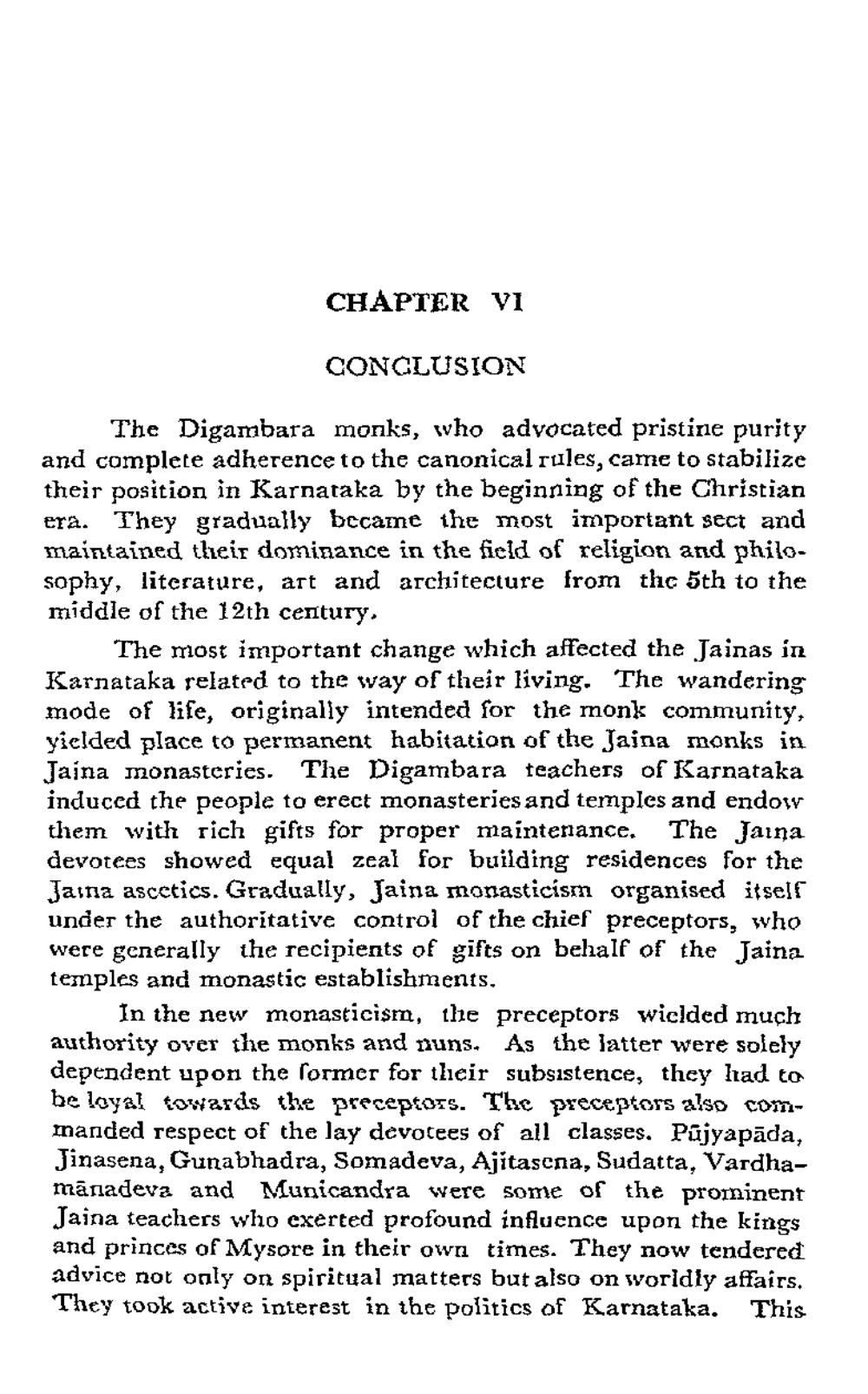________________
CHAPTER VI
CONCLUSION
The Digambara monks, who advocated pristine purity and complete adherence to the canonical rules, came to stabilize their position in Karnataka by the beginning of the Christian era. They gradually became the most important sect and maintained their dominance in the field of religion and philosophy, literature, art and architecture from the 5th to the middle of the 12th century.
The most important change which affected the Jainas in Karnataka related to the way of their living. The wandering mode of life, originally intended for the monk community, yielded place to permanent habitation of the Jaina monks in Jajna monasteries. The Digambara teachers of Karnataka induced the people to erect monasteries and temples and endow them with rich gifts for proper maintenance. The Jaina devotees showed equal zeal for building residences for the Jaina ascetics. Gradually, Jaina monasticism organised itself under the authoritative control of the chief preceptors, who were generally the recipients of gifts on behalf of the Jaina temples and monastic establishments.
In the new monasticism, the preceptors wiclded much authority over the monks and nuns. As the latter were solely dependent upon the former for their subsistence, they had to be loyal towards the preceptors. The preceptors also commanded respect of the lay devotees of all classes. Pūjyapāda,
Jinasena, Gunabhadra, Somadeva, Ajitascna, Sudatta, Vardhamānadeva and Municandra were some of the prominent Jaina teachers who cxerted profound influence upon the kings and princes of Mysore in their own times. They now tendered advice not only on spiritual matters but also on worldly affairs. They took active interest in the politics of Karnataka. This




